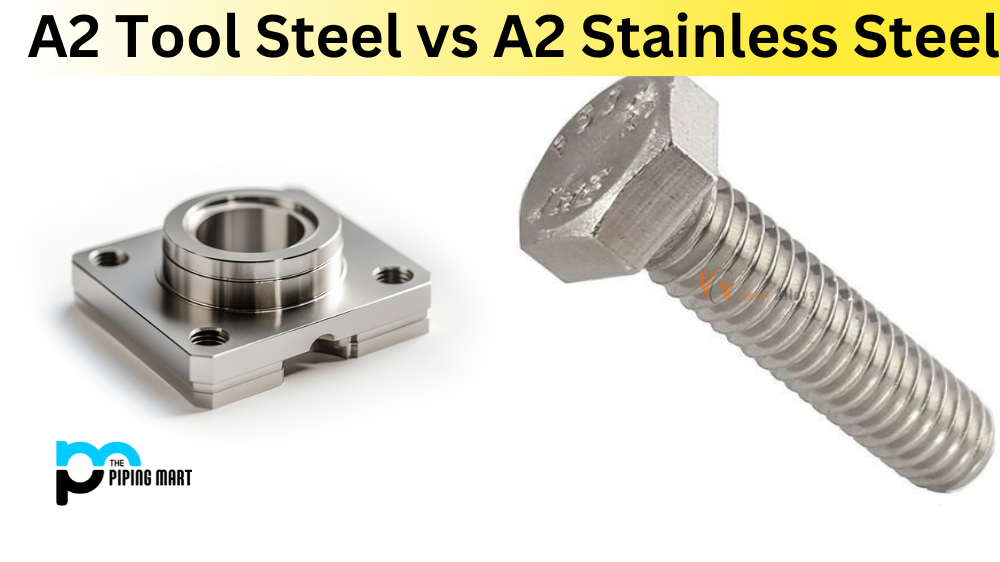When it comes to selecting the right steel for your project, it can be a daunting task. With so many options out there, it’s essential to consider the specific requirements of your project before making a final decision. This blog post will explore two commonly used materials – A2 Tool Steel and A2 Stainless Steel. We will discuss each metal’s pros and cons, features, applications, and the best choice for your project.
What is A2 Tool Steel?
A2 Tool Steel is an air-hardening, high carbon, and high chromium steel. Due to its high carbon content, A2 tool steel provides excellent wear resistance, toughness, and hardness. It is commonly used in industrial applications, such as stamping and drawing die, shear blades, and other cutting tools.
What is A2 Stainless Steel?
A2 Stainless Steel, on the other hand, is a corrosion-resistant steel with excellent toughness and strength. It contains around 4-6% of Molybdenum, which makes it highly resistant to pitting and crevice corrosion. It’s widely used in various applications such as marine and coastal infrastructure, food processing, and medical implants.
Difference Between A2 Tool Steel and A2 Stainless Steel
Strengths and Weaknesses of A2 Tool Steel and A2 Stainless Steel
A2 Tool Steel has high wear resistance and hardness, making it ideal for cutting tools. However, it’s not as corrosion-resistant as other steel grades. Therefore, it’s not recommended for use in applications that involve exposure to harsh environmental conditions.
A2 Stainless Steel, on the other hand, has a high degree of corrosion resistance and is also easy to fabricate. It’s well-suited for harsh environmental conditions like coastal and marine environments. However, it is easier than A2 Tool Steel, which makes it less suitable for cutting applications.
Applications of A2 Tool Steel and A2 Stainless Steel
A2 Tool Steel is commonly used in various applications such as cutting tools, blanking, and forming dies. It’s also popular in the manufacturing of plastic injection moulds. Due to its high hardness and wear resistance, it’s ideal for cutting, shaping, and forming hard materials.
A2 Stainless Steel is mostly used in applications that require high corrosion resistance, such as marine and coastal infrastructure, food processing, and medical implants. It’s also widely used in the automotive industry to manufacture exhaust systems because of its resistance to high-temperature environments.
Other Differences
- A2 tool steel is a high-carbon steel typically used for making cutting tools and other wear-resistant parts.
- A2 stainless steel is chromium-containing steel resistant to corrosion and wear.
- A2 tool steel is harder than A2 stainless steel, but both are extremely tough and durable.
- A2 tool steel can be heat treated to achieve a higher hardness, while A2 stainless steel cannot.
- A2 stainless steel is more corrosion-resistant than A2 tool steel, but both steels are highly resistant to wear and tear.
Conclusion
A2 Tool Steel and A2 Stainless Steel are popular in various industrial applications. A2 Tool Steel is best suited for cutting, shaping, and forming hard materials, while A2 Stainless Steel is suitable for use in environments requiring high corrosion resistance. When choosing between the two, it’s important to consider the specific requirements of your project, including environmental conditions, budget, and intended use. By choosing the right material, you can ensure a successful and long-lasting project.

Hey, I’m Krutik, a casual blogger expert in the metal industry. I am passionate about providing valuable information to my readers. With a background in engineering and construction, I like playing Cricket & watching Netflix shows in my free time. Thank you for visiting my blog, and I hope you find my information helpful!




